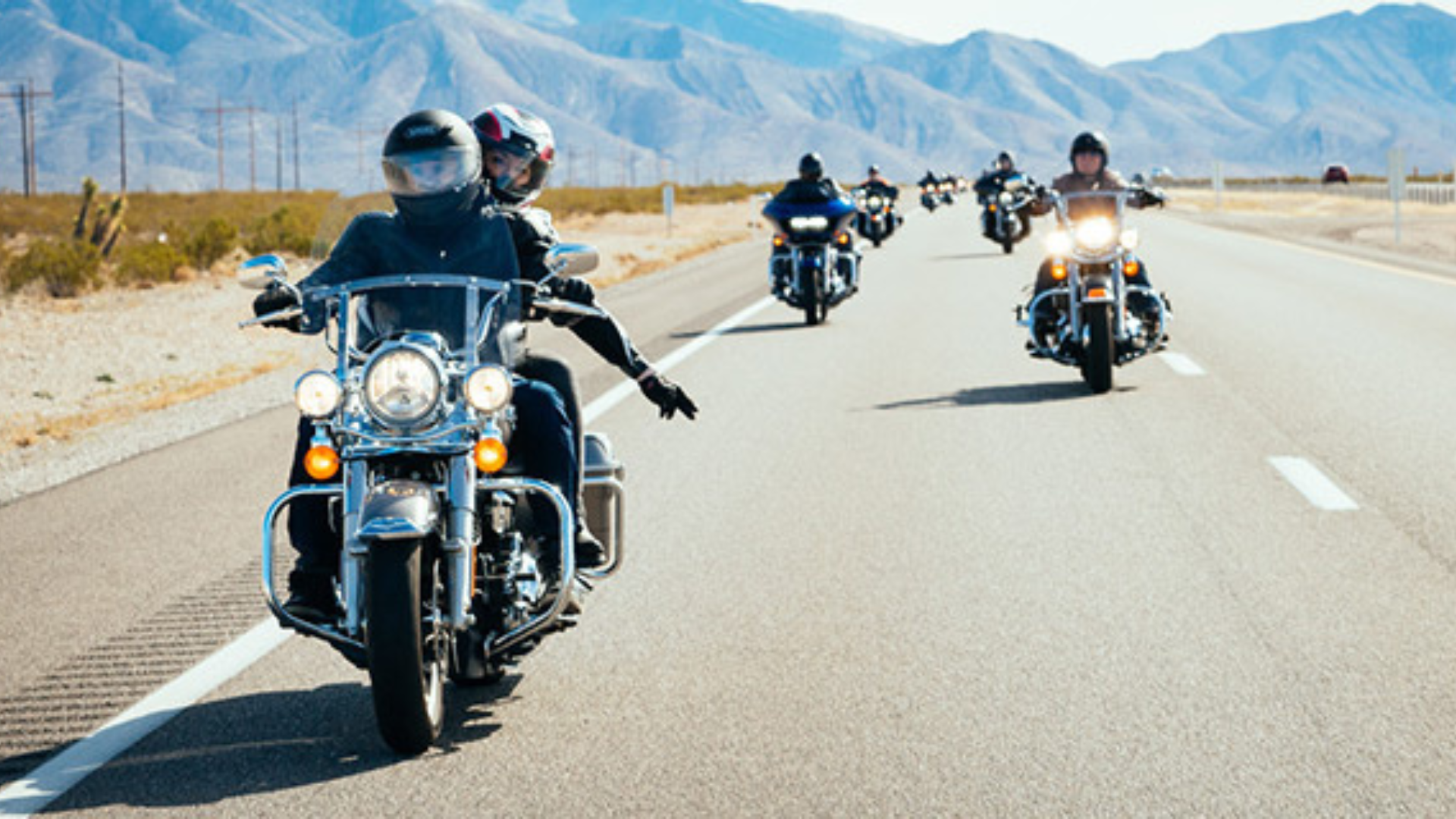Motorcycle Hand Signals and 5 More Safety Tips
We all love riding motorcycles and what could be better than to share that pleasure with friends?
The dynamics of riding quickly get more complicated, however, as you add more bikes to the group. The following are some of the essential tips for riding with others.
1. HAND SIGNALS
While some riders have communications units in their helmets, most do not. Hand signals enable you to convey simple messages. Make sure that everyone on the ride knows at least the basic ones.
A hand held up and brought down with the palm down means to slow down. A leg kicked out to the right or left warns the rider behind you of a road hazard. There are many more. Some groups use standard signals while others make up their own. It all works, as long as everyone knows the signals.
2. INFORMATION
Before you get on the bikes be sure that everyone knows where you’re going. Inevitably there are times when the group gets separated. Discuss where you’re going, where you expect to stop, and what you’ll do if you do get separated. Exchange cellphone numbers. And then make sure the latest plan is clear each time you start out again.
3. SAFETY
Stagger it. Traffic lanes are plenty wide to allow one rider to take the left wheel track and the next to take the right wheel track. Other riders then follow the pattern, creating a staggered riding formation. Not only does this create more space between each rider and those directly behind and in front of them, it also provides better visibility so everyone can see further down the road.
It’s OK to stretch the line out on the open road but tighten up when going through towns so that the tail end of the group doesn’t get stranded at red lights that others got through on the green. Spreading out on the highway also creates space for other vehicles to pass one or two bikes at a time. If someone wants to pass and the only way to do that is to blast past the entire group in one rush they’re a lot more likely to take dangerous chances when their patience wears thin. Enabling them to pass bit by bit is safer for everyone.
4. SURROUNDINGS
When a group is large it is unlikely that the leader will be able to keep an eye on everyone and know to stop if someone in the back has trouble. It is essential then that if you see the guy behind you pull over, or you lose sight of them in the distance, that you respond. If he pulls over, you pull over, too. This starts a chain reaction that runs up to the leader. If you’ve lost sight of him, slow down or stop to let him catch up. If he doesn’t show up in a reasonable amount of time, go back. It may just be the rider had to stop to tighten a strap on his luggage. It may be he had a flat tire, or another mechanical issue. Whatever you do, don’t just keep riding, figuring he’ll catch up with you sooner or later. Riders take care of their own.
5. GROUP DYNAMICS
Someone is always going to be the last one to be ready to ride but if you’re that person every time, your friends are getting annoyed. If no one else even gets on their bike until you are on yours and have your helmet on, that’s a problem. Maybe you need to start getting ready to ride while the others are still relaxing. Maybe you ought to just forget about pulling that item out of your bags until sometime later. Don’t be the guy everyone complains about.
6. YOUR COMFORT ZONE
As important as it is to coordinate and be in sync with your group of riders, it is equally important that you not ride beyond your abilities. Just because the leader is setting a fast pace doesn’t mean you have to match it if you can’t do so safely. Ride your own ride, not theirs. If the pace is too fast, slow down to a speed you’re comfortable with. If those ahead of you are paying attention, they’ll slow down, too, as part of the chain reaction described above. When you get the chance later, discuss the matter and maybe work out a plan where some riders agree to ride in a slower group while the others go ahead in a faster group. No one is going to mock you for being careful, and if they do, these are people you don’t want to ride with in the first place.
Riding motorcycles with friends, or making new friends while riding with them, combines two of the best things life has to offer. Get out there and make memories together and you’ll have a bond that lasts a lifetime.

